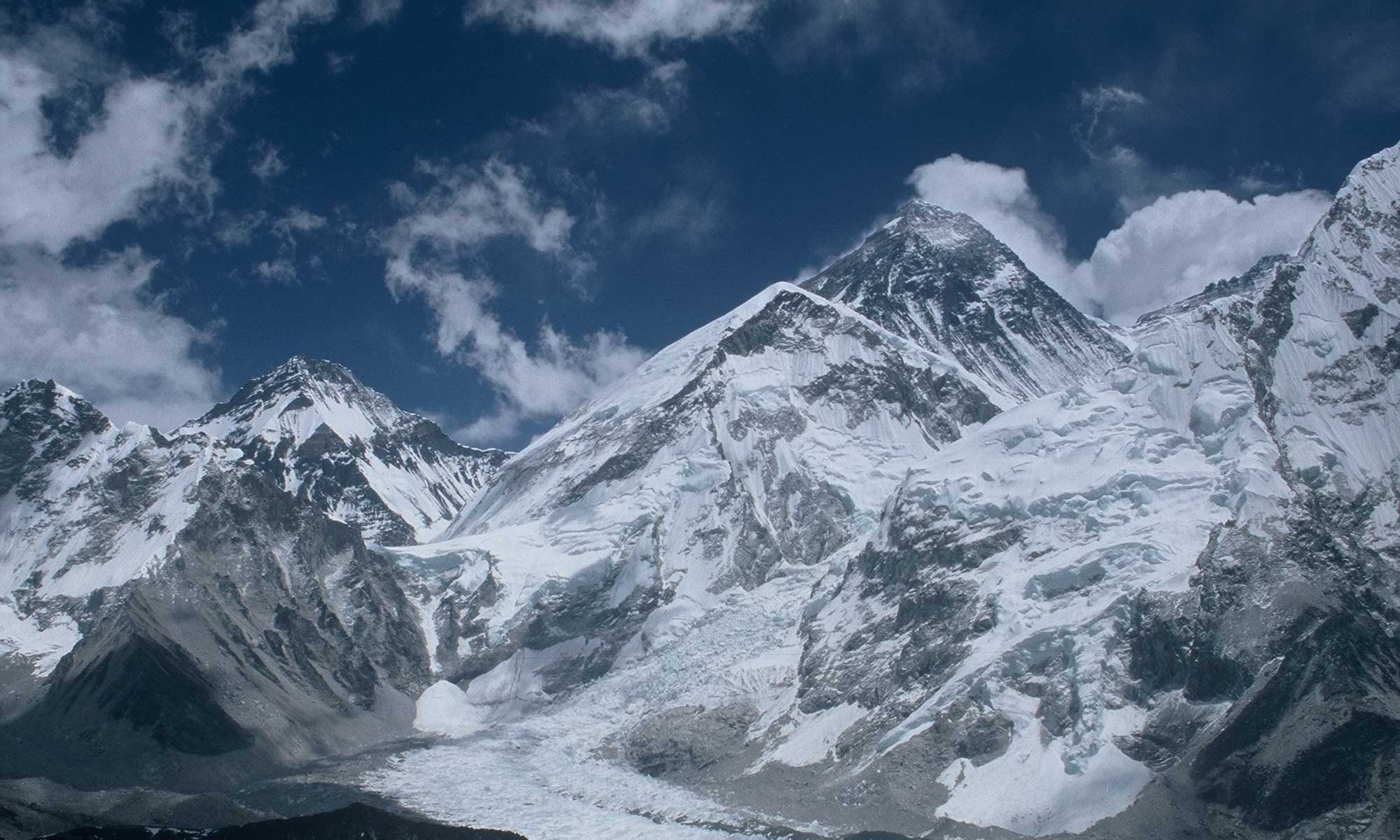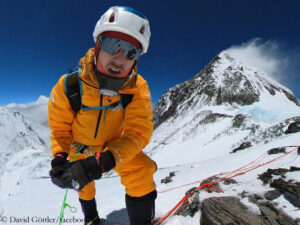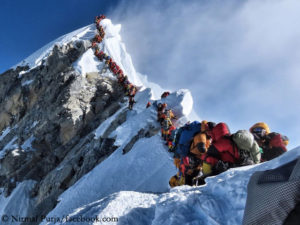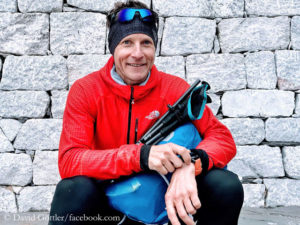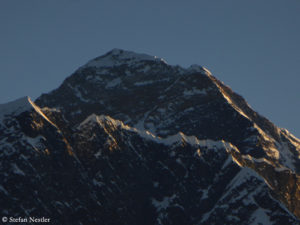His tactics worked out perfectly. “I’ve always said I need a year with a long lasting good weather window,” David Göttler tells me, “so that all the other expeditions have been on the mountain before I get going.” As reported yesterday, the 43-year-old German professional mountaineer had reached the summit of Mount Everest at 8,849 meters on Saturday: without bottled oxygen – and without Sherpa support. With the exception that Göttler also used the ropes that a Sherpa team had fixed for the commercial teams to secure the normal route.
After two failed attempts in 2019 and in 2021, David now stood on the highest point on earth. It was his sixth eight-thousander summit success without bottled oxygen after Gasherbrum II (in 2006), Broad Peak (in 2007), Dhaulagiri (in 2008), Lhotse (in 2009) and Makalu (in 2013). In 2017, Göttler had climbed the South Face of Shishapangma with Italian Hervé Barmasse – before they stopped their ascent five meters below the summit because of too high avalanche danger.
I spoke to David on the second day after his Everest summit success.
First of all, congratulations on your Everest ascent without breathing mask. How many stages did your summit push have?
On the first day I climbed from base camp to Camp 3 (7,200 m), on the second day to the South Col (almost 8,000 m). There I rested for a few hours and then left at 9.30 p.m. local time. It took me 12 hours and 20 minutes to reach the summit. Then I descended to Camp 3, spent another night there and returned to base camp on 22 May.
What were the conditions like during your ascent?
The weather was extremely good, the conditions on the mountain were perfect. I was very lucky. Only below the South Summit was the snow a bit loose, so I slipped a bit in the track. That was a big difference from the usual hard steps.
The ridge from the South Summit to the main summit was relatively snow-free this year, as reported to me by other mountain guides who have been there more often. So I was glad to be alone. From the South Summit (8,749 m) to the summit and back to Hillary Step (8,790 m) I did not meet any other people, there I was completely alone. That was a gift – compared to 2019 (when David had turned back at 8,650 meters because the route was too crowded). I couldn’t believe it at all.
That was good for you because you were able to maintain your speed.
Well, speed is relative. I felt so slow there. Now when I look at the videos I took with my selfie camera, I think: now move, at least take a step! But nothing happens. Scientists from the National Geographic expedition set up a weather station near the summit this spring. When I saw the station, I thought: Now you’re almost there. But then it seemed so long. From that you can see how much perception shifts up there.
How did you experience the challenge of climbing Everest without breathing mask?
I learned from my first two failed attempts. It felt quite good physically, and mentally I was also very present. I was surprised how alert I still was. I’ve had other experiences where I was a little off my game mentally up there then. That wasn’t the case this time. It was an incredibly good feeling.
What was going through your mind when you first reached the previous points of return and then finally the summit of Everest?
At each point I hadn’t reached before, I was aware that there were more points ahead. And I asked myself: Will I still make it back? Especially when it was a bit up and down, like between the South Summit and the main summit. I was really constantly weighing up whether I could still muster the necessary strength to return safely. That was not easy.
What do you now take home from the highest mountain on earth?
It is difficult to put this into words so soon after the summit success. But at the moment I feel humility and gratitude above all. Because I know how small this margin is in which you move there. Everything just has to fit together. The pendulum could have quickly swung the other way again. And I know this feeling well, of coming home without summit.
